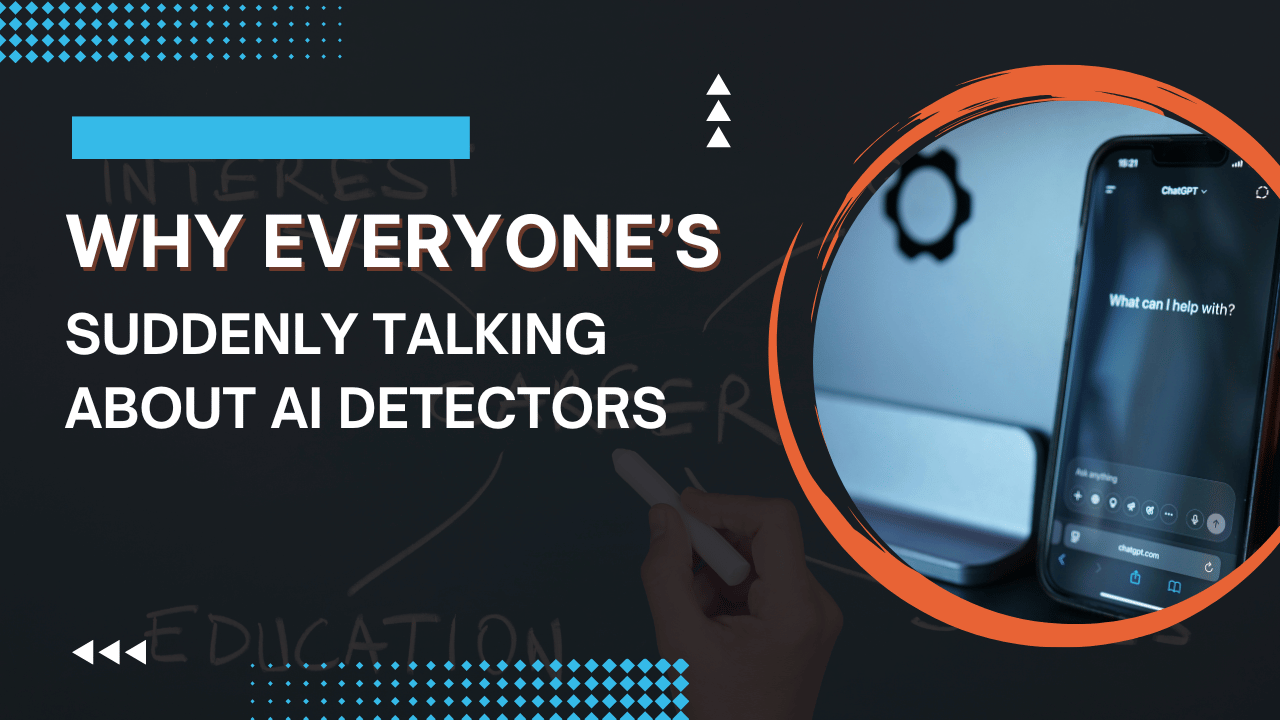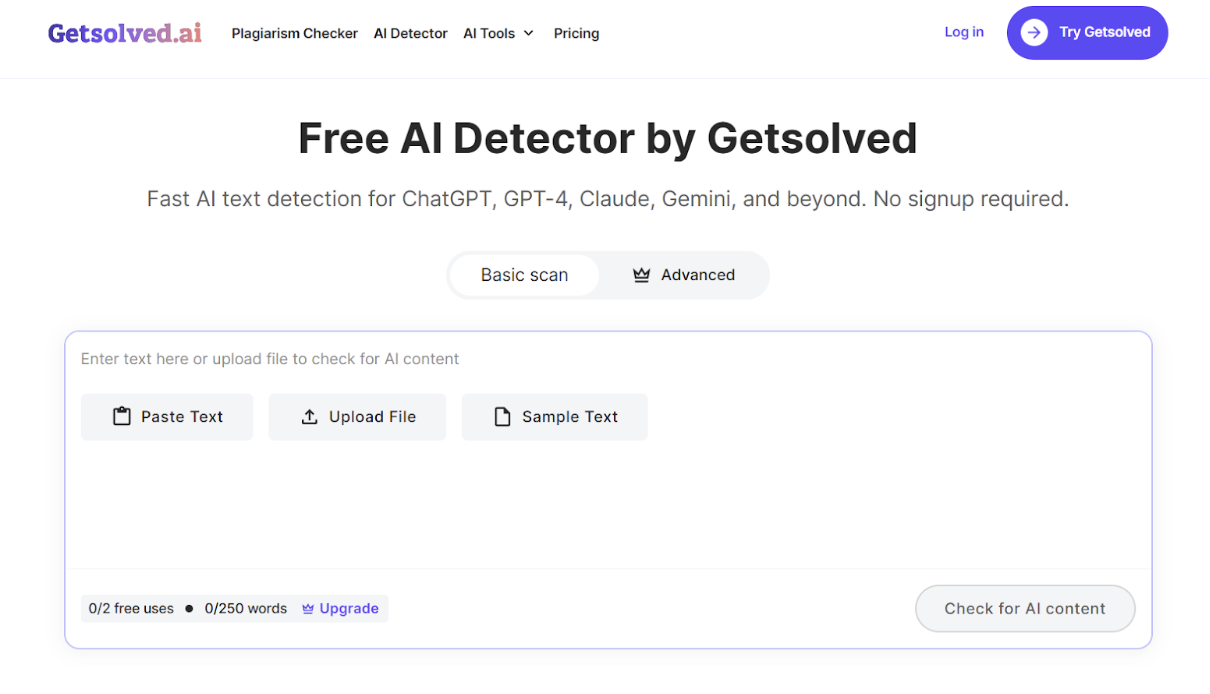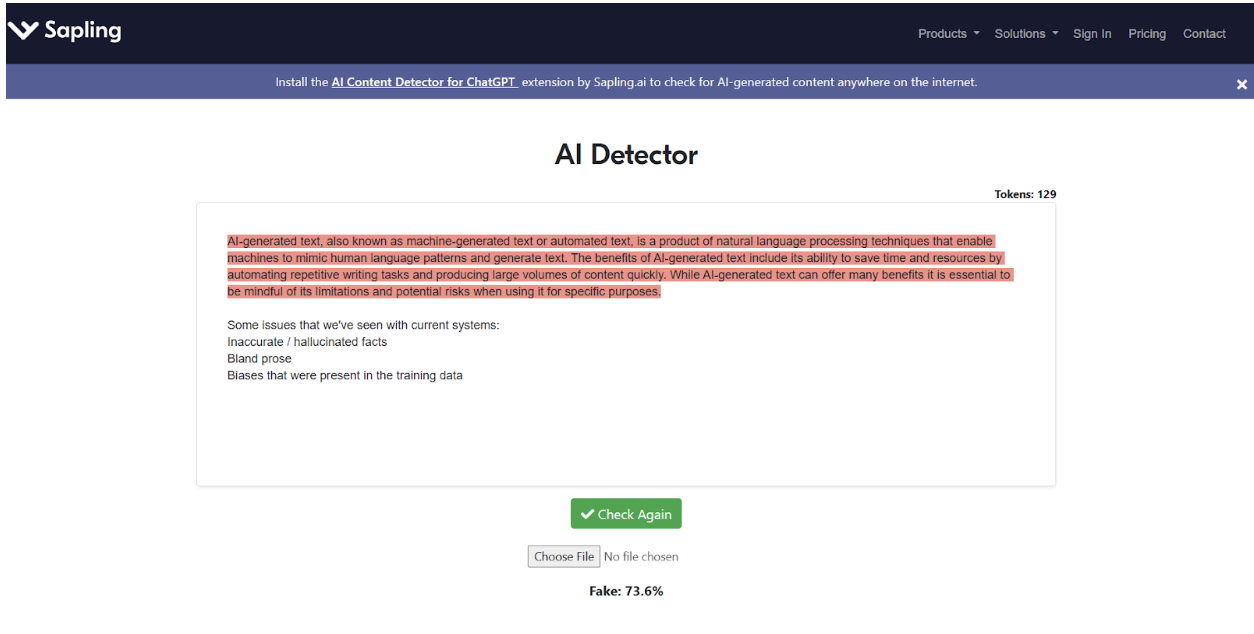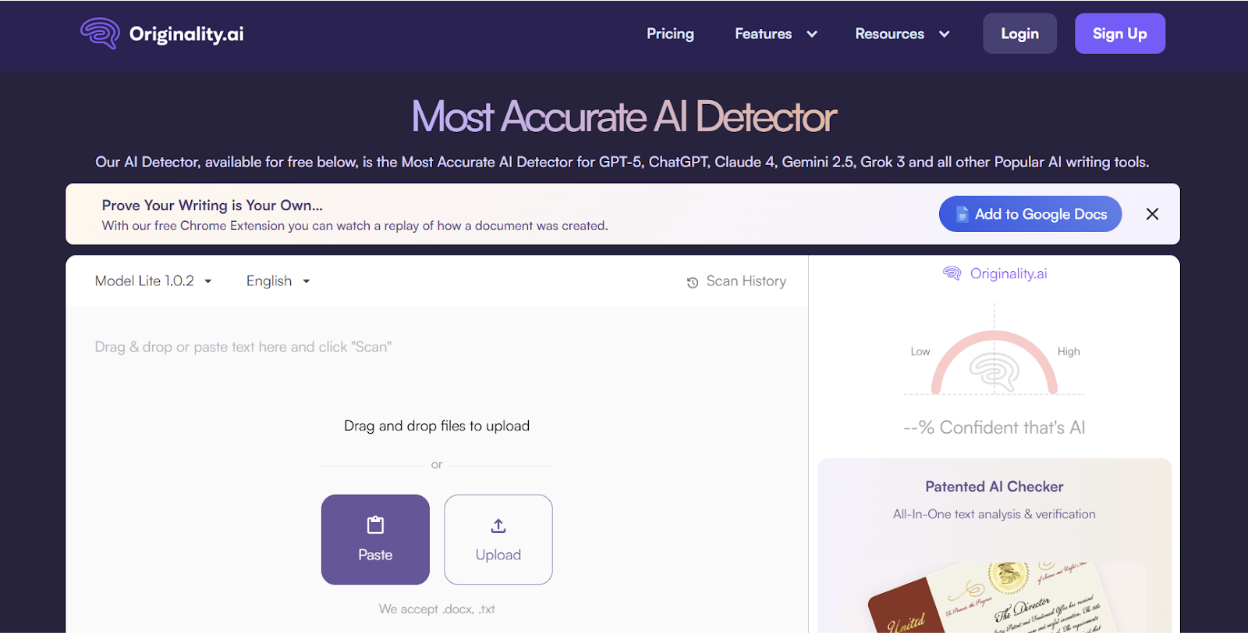Why Everyone’s Suddenly Talking About AI Detectors
The use of AI tools such as ChatGPT, Gemini, and Claude have become usual in the writing, studying, and work processes of people. They can be found everywhere, whether it is in quick replies or complete reports. That also implies that it is becoming more difficult to distinguish between human writing and AI. That may cause certain real headaches to teachers, editors, or even students.
It is at this point that AI detectors come in. They are not magic, but they are doing a good job of identifying patterns of text that point towards machine text generation. Many guesses can be saved by the finest AI detectors whether it is keeping your assignments honest, upholding editorial standards or even proofreading your own work.
Imagine them to be gatekeepers who are silent. They will not scream at you or red light you, but they will provide you with a definitive answer as to whether something could be AI written. And as the new tools keep on emerging every month, it is worth knowing which ones do go.
How These Tools Actually Catch AI Text
AI detectors do not scan secret watermarks and hidden codes. They pay attention to the manner in which AI tends to write. AI has a tendency to use clean, predictive language that individuals can hardly sustain throughout longer text. The tools test the predictability of individual sentences, test the extent of difference in the rhythm, and test against established AI performance. When the text is too smooth and even it is classified as potential AI.
The procedure is not flawless, but it presents a strong indication. These devices are not constructed to trap people, but serve to create some sort of light in the way a text may have been composed.
What Separates the Good from the Useless
Not every tool that claims to detect AI is worth your time. Some are too slow. Some flag everything. Some barely work at all.
If you want something reliable, look for:
Accuracy that actually matches real-world use.
Clear, fast results instead of vague percentages.
Coverage across multiple models, not just ChatGPT.
Simple design that doesn’t require ten steps to get an answer.
A free option to test before committing.
This is what sets the best AI content detectors apart. They’re built to help, not to frustrate. In the next sections, we’ll look at the tools that actually deliver on this promise.
The Tools That Actually Do the Job
The AI detectors are numerous, and only a few of them provide you with clean results, without messing up the process. The one that is right will depend on what are the best AI detectors and why you need it. Others are constructed in classrooms, others in publishers and still others in anyone who simply wants to know whether a given text is AI written.
The tools that are actually working are given below. All of them possess their advantages, so it is not a choice of the most beautiful name but the one that suits your working process.
1. GPTZero
This one has been around for a while and is still popular. It checks text quickly and gives a sentence-by-sentence breakdown, which makes it easy to see where AI may be involved. It works well with ChatGPT content and is simple enough for students or teachers to use without a learning curve.
Pros: easy to use, good for quick checks, supports different text types
Cons: less consistent with Gemini and Claude
Pricing: free basic plan with optional upgrades
2. GetSolved AI Detector
If you’re looking for a fast and reliable option, the AI detector by GetSolved is worth checking out. This online service gives clear results without burying you in complicated reports. It comes with a built-in smart assistant that highlights suspicious text and offers useful context instead of random numbers. Since it also doubles as a plagiarism checker, it works well for students, editors, and teachers who need something quick and accurate.
Pros: fast results, clean layout, solid detection across models
Cons: advanced reporting requires a paid plan
Pricing: free tier with upgrade options
3. Copyleaks
Copyleaks is a solid pick for people who work with larger volumes of text. It’s used by schools, publishers, and companies that want something dependable. It detects several AI models and offers detailed reports for anyone who needs more than a basic scan.
Pros: strong accuracy, good reporting, trusted by institutions
Cons: requires sign-up to access all features
Pricing: free limited tier and paid options
4. Sapling AI Detector
Sapling is a handy option for people who want quick checks without complicated steps. It runs straight in the browser and works well for shorter texts like emails, reports, or class submissions. It’s light, fast, and gives a clear confidence score that’s easy to read.
Pros: simple setup, quick checks, smooth browser use
Cons: works best with English text
Pricing: free basic plan with paid upgrades
5. Originality.ai
Originality.ai is built mostly for publishers and content creators. It scans text for multiple AI models and gives a clear breakdown that’s easy to share with a team. It’s not free, but it’s popular with agencies and platforms that need strong results.
Pros: reliable detection, strong scoring system, team-friendly features
Cons: no free plan
Pricing: pay-per-use credit system
Arrange Them Side by Side
Here’s a quick look at how these tools compare. It makes it easier to see which one fits your needs instead of guessing.
Good AI detectors are not about fancy marketing. They are about speed, accuracy, and trust. The right one depends on how you plan to use it and how much detail you actually need.
What Makes a Detector Valuable
Not all detectors are equal. Others provide informal percentages which are not really helpful. Other ones need an eternity to load or break longer text. The best of them are quick and simple to follow and know what they are presenting.
To find something that really works you should seek the following characteristics:
It provides answers promptly without having to take endless procedures.
It is understandable as to what was flagged and why.
It is not limited to ChatGPT, so it is applicable to other models.
It does not crash when working on longer text.
It is easy to navigate, despite not being technologically minded.
When a tool ticks these boxes it ceases to be a hassle and it is in fact a part of your workflow.
How People Use AI Detectors Today
AI detectors do not only work in schools. They are applied by people in abundance in daily life. To check whether an assignment has been original, a teacher may scan several lines of it. Before an approving step takes place, a publisher could put articles through a detector. A learner may go over his/her draft again to ensure that it is clean.
Common use cases:
Instructors screening assignments.
Reviewing the content prior to posting by publishers.
Identifying problems beforehand by editors.
Students proofreading their papers.
Checking of reports by teams before they become public.
The best AI detectors save time because they give clear answers fast. That’s what makes them practical tools, not just another online trend.
Remember the Limits Too
AI detectors are smart. An AI text can be well edited and still get through. An artificial work could be flagged because it is too clean. That is why the answer ought to be an indication, not the last word. The detector is a device that should be used with a small portion of common sense. Read between the lines, read the text, and make a call not only a number on the screen.
How to Get the Most Out of Any Detector
Even the best tools will not be helpful when used in the wrong way. Two little habits will make you a far better and less annoyed man regarding your checks.
Here’s what helps:
It is faster with run clean and unformatted text.
When dealing with a high stakes text, do not rely on a single tool.
Do not simply glance at the percentage on the report but read the report.
Duplicate flagged parts so as to be able to explain or validate in the future.
Transfer the findings to lead and not be a final decision.
The little thing may go a long way. An AI detector is not merely a scan performed in a hurry with the proper approach taken. It becomes a self-evident, dependable indication of your review process.
How to Make AI Detection Work for You
AI writing isn’t going anywhere, and neither are the tools that help make sense of it. The best AI checker brings speed, clarity, and trust to the table. Some, like GPTZero, focus on simple checks. Others, like GetSolved, give fast and clear reports that fit easily into everyday workflows.
The key is picking one that works for you and using it smartly. With a good tool and a little context, you can handle AI-written text with confidence instead of second guessing every line.






